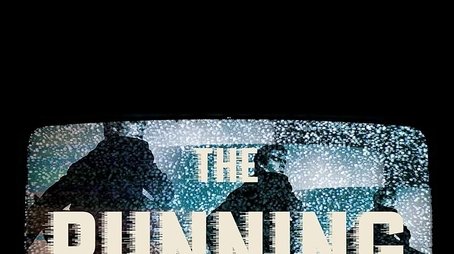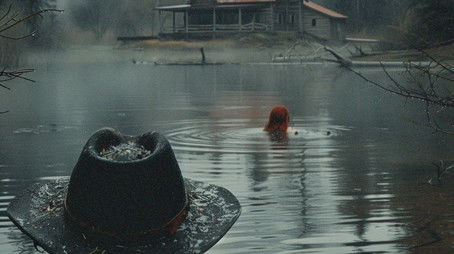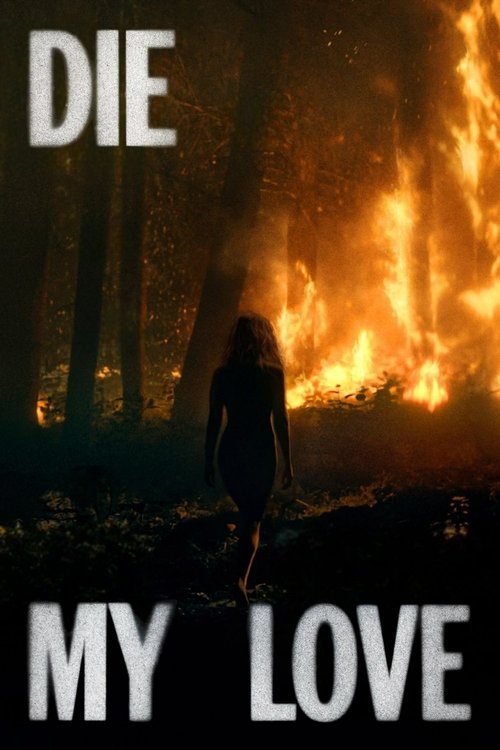
Ask Your Own Question
What is the plot?
A lone figure steps into a deserted street at night and sets a smoldering, lifeless body ablaze, leaving the corpse to burn while the passerby who watches in horror flees. The next mornings reveal more discoveries: charred remains, bodies found under suspicious circumstances, and a mounting count that reaches six victims. The killings prompt police action and ACP Ranjith Kumar is placed in charge of the investigation. While Ranjith begins assembling evidence, a deliberate motor accident puts him into a coma; officers find him unconscious on the roadside near the hospital, and the inquiry passes to ACP Aravindan, an incisive and determined investigator who recently dismantled a finance robbery ring led by a man named Dheeran. Aravindan takes over the serial-killer probe with Sub-Inspector Manoharan at his side; Manoharan is a single father who manages a chronic heart condition while carrying out police duties.
Aravindan and Manoharan sift through crime scenes and forensic reports. From a burned victim they remove a surgically implanted ankle plate, a piece of medical hardware that mandates a certain age and recovery history; using the plate and demographic information they narrow the field to seven people who could plausibly match that surgery profile. One of the seven is Sudhakar, a man who indeed has a history of ankle surgery. During house-to-house inquiries Aravindan notices an old school photograph in Sudhakar's home that ties to Twin Birds Matriculation School. That leads him to Meera, a woman who claims to be the twin sister of one of the slain people. Meera's account and the school connection deepen the investigation into the victims' shared past.
Aravindan summons Sudhakar and Meera for questioning. Under pressure, the two unmask an extraordinary deception: they are not who they have been passing themselves off as. Sudhakar is actually Surendhar, and Meera is Tara. They explain that their identical twins--Sudhakar and Meera, the people whose names they have been using--disappeared months earlier. Surendhar and Tara detail a terrifying sequence: an unknown, masked assailant abducted their twins and contacted them by video call, holding the siblings' lives as leverage. The abductor compelled Surendhar and Tara to kill a person whose face was covered, threatening that, if they refused, their twins would be executed. Desperate to save their family members, Surendhar and Tara committed the murders as ordered. Only afterward did they realize the face they had been ordered to hide was their own brothers' and sisters' faces; they had unwittingly slain their own twins. In the aftermath of that revelation, Surendhar and Tara adopted their twins' names and identities, trying to elude police suspicion while they themselves remained traumatized and trapped by the scheme. They tell Aravindan they suspect one classmate from Twin Birds--someone named Benjamin--might be orchestrating the abductions and coerced killings.
Aravindan traces the Twin Birds alumni list and compiles records from the school. He meets the school correspondent, Shanthi, and presses her for details about the children who once attended. Shanthi recounts how she and her husband Ravi had adopted two orphaned boys, Benjamin and Francis, after noticing Benjamin's precocious chess skill. The brothers grow up within the school's environment: Benjamin becomes a chess prodigy who brings renown to Twin Birds, and Francis excels academically, outpacing other pupils. Francis has a severe fear of the dark--nyctophobia--which leaves him vulnerable to cruel taunts by classmates. Shanthi describes a calamity: one day Francis is locked inside a dark chemistry laboratory by other students, provoked and humiliated; he suffers an epileptic seizure in the confinement and dies before anyone notices. Benjamin, who is in the physics lab at the time, cannot reach Francis in time and finds himself helpless as his brother succumbs. Shanthi explains that her husband Ravi conceals the true circumstances of Francis's death to spare the school from scandal; afterward the institution suffers further misfortune when a fire destroys parts of the campus and Ravi descends into alcoholism and dies. Shanthi also tells Aravindan that Benjamin disappears from the public record after the tragedy; he is taken in by a nun named Mother Helen for a time, and then Benjamin is adopted by another family whose identity Shanthi cannot confirm. Shanthi reports that every year on Francis's death anniversary, someone visits Francis's grave.
Back at the police station, Aravindan and Manoharan match dates and names against the victims and discover a chilling pattern: the murderer has targeted sets of twins, and the killings fall on or near twin birthdays. The list indicates that Sanjana and her twin Anjana, and the brothers Dheeran and Dheeraj, remain at risk. Aravindan escalates protection for Sanjana and Anjana, stationing officers and checking communications; Dheeran and Dheeraj prove inaccessible because Dheeran is already under custody for the finance robbery ring that Aravindan once helped dismantle and Dheeraj is out of town. Sanjana, who had earlier encountered Aravindan by mistake when she confuses him for a prospective groom, harbors affection for him; she hopes for reciprocation, but Aravindan keeps his distance, focused on the case rather than romance.
Investigators continue to uncover grim evidence. Aravindan finds what appears to be Dheeran's charred corpse in a remote area, a body burned beyond easy recognition. Forensic examination reveals signs consistent with postmortem burning, and the discovery is publicly reported as Dheeran dead by fire. Meanwhile, Ranjith Kumar awakens from his coma and supplies new information: he insists the accident that put him in a coma was not a random collision but a planned attempt on his life; he maintains someone rescued him after the crash and deliberately placed him near the hospital so he would be discovered alive but unconscious. Ranjith's recovery changes the case's dynamics because he had been the original lead investigator before his incapacitation.
Shanthi adds a practical lead: the anonymous visitor to Francis's grave may be a person with a direct motive tied to the past injury and humiliation. Acting on that tip, Aravindan scopes the cemetery on the anniversary of Francis's death. He waits among the tombstones until a solitary figure appears near Francis's headstone. From a distance the figure seems a man who carries himself like many ordinary mourners, but when Aravindan moves to intercept he notices a small discrepancy in gait and fragrance. As he approaches, the man abruptly reveals himself to be Sub-Inspector Manoharan in plain clothes--Manoharan has disguised himself as a mourner to obscure his true identity. Aravindan races after him. The two sprint across the cemetery paths, heedless of headstones. Manoharan, in his disguise, drops the façade and flees with a speed that belies his cardiac condition, and the pursuit becomes violent. Aravindan eventually loses sight of Manoharan during the chase and returns to his command post to protect Sanjana and Anjana.
Before Aravindan can reach the twins' protected location, he intercepts a phone call and then collapses after an aggressive physical confrontation: Manoharan intercepts the team and assaults Aravindan, beating him severely before vanishing. When Aravindan regains consciousness moments later, he finds the situation in chaos: Manoharan has kidnapped Anjana and driven her away. Officers trace the abductor to an abandoned warehouse where a struggle unfolds. Aravindan arrives and enters the dim, concrete space; he finds Anjana bound and gagged and a shadowy figure standing before her. A fight erupts. The intruder--who has been planting false trails and staging murders--moves with cold efficiency. During their scuffle Aravindan loses his service weapon. Desperate to prevent more bloodshed and believing Aravindan will give decisive instructions, he hands his pistol to Sanjana so she can shoot to stop the assailant. Sanjana, under extreme duress and trusting Aravindan's orders, levels the gun and fires. The bullet hits Anjana; she falls, mortally wounded on the cold floor. Sanjana collapses into stunned horror and cannot process that she has shot her own twin.
As rescuers swarm the warehouse and medics attend to Anjana, the investigation yields an earthshaking revelation: the man calling himself ACP Aravindan is not who everyone has assumed he is. Investigators uncover evidence proving that the officer who led the inquiry--who had claimed to be Aravindan and who had been commended for catching Dheeran's robbery ring--has been operating under a false identity. In private custody, a series of documents and a distinct lighter box link Aravindan to the name Benjamin. Ranjith examines the lighter case and recognizes it: Benjamin carried that lighter years ago, and the emblem matches the one associated with the boy from Twin Birds. Under interrogation, the man posing as Aravindan drops the mask and confesses that his given name is Benjamin. He explains in a measured voice that the public persona of ACP Aravindan was a constructed role he assumed so he could steer and dominate the investigation; he had deliberately orchestrated the road accident that put Ranjith in a coma in order to take over the serial-murder probe and manipulate police operations. Benjamin admits responsibility for multiple killings and describes his motive also in clear terms: revenge. He recounts Francis's death and the humiliation that followed, and he tells the officers that he pursued a career in the Indian Police Service as a deliberate method to get inside the law enforcement apparatus and methodically punish the classmates who humiliated his brother. Benjamin says he identified ten sets of twins among his classmates whom he judged to be complicit in Francis's death. He admits that he arranged for certain of those murders to look like someone else's handiwork while he covertly engineered other killings himself. He acknowledges that he coerced Surendhar and Tara indirectly by abducting their twins and using threats to force them to kill; he accepts moral responsibility for the chain of events that led Surendhar and Tara to murder their own siblings. He also discloses that he manufactured the corpse found in the charred remains as part of an elaborate ruse: he burned an unknown body and passed it off as Dheeran to feed investigators a false lead and to get closer to Dheeran in custody.
Benjamin's confession is precise: he claims to have executed or arranged the deaths of the twins who he believes were responsible for Francis's humiliation and subsequent death. He explains that he coerced Manoharan into assisting in certain deceptions by threatening the life of Manoharan's son; to preserve his child, Manoharan agreed to feign being Benjamin on occasion and to misdirect inquiry while Benjamin carried out killings elsewhere. Benjamin admits he used that staged identity at the cemetery to mislead Aravindan's team and to facilitate the kidnapping of Anjana so he could confront members of the old school circle one by one. He also confirms that he planned the staged accident that incapacitated Ranjith so that he would step into the role of ACP Aravindan and lead the inquiry himself.
After giving his full account Benjamin surrenders his weapon and turns himself over to Ranjith. Ranjith accepts the confession and moves rapidly through legal procedure. Prosecutors build a case on Benjamin's admissions and the forensic evidence tying him to the crimes. In court, Benjamin stands mute about excuses; he states he committed the murders to avenge Francis's death and that he deemed the legal system inadequate to punish what he calls the injustice done to his brother. The judiciary convicts Benjamin of multiple counts of murder and sentences him to death for his orchestrated killings, including the coerced murders carried out by others at his direction and the direct killing of individuals he names in his confession.
While Benjamin awaits his sentence, Ranjith and Manoharan turn their attention to Dheeran, who remains in prison on the finance-robbery charges. Ranjith realizes too late that Benjamin's earlier maneuver--burning a body and passing it off as Dheeran--was a diversionary tactic meant to insulate Benjamin's true activities and to draw investigators into falsely closed lines of inquiry. Before prison officials can arrange tight security, Benjamin engineers one more violent act: he manages to arrange a meeting or a clandestine approach that allows him to kill Dheeran inside the penitentiary. The circumstances in the cell are brief and brutal; Dheeran dies at Benjamin's hands, stabbed or strangled in the confined space while guards scramble in the corridors. News of Dheeran's death reaches Ranjith and Manoharan as they rush to the prison, but they arrive only after the killing has been completed and the prisoner is found dead in his cell. With Dheeran's death Benjamin satisfies his long-planned list of reprisals against those he felt responsible for Francis's fate.
In custody, Benjamin takes one final action to conclude his life on his own terms. He ingests a lethal dose of pills intended to induce brain death; he leaves explicit instructions with medical staff to harvest his organs. Doctors determine that his heart remains viable despite the induced brain death, and surgery teams perform an operation to transplant Benjamin's heart into Sub-Inspector Manoharan, who has been deteriorating under the strain of his cardiac disease and the physical demands of the case. Surgeons close the chest and later tell family and colleagues that the transplant has succeeded. Following recuperation from the operation, Manoharan insists on fulfilling Benjamin's last request regarding burial. The police arrange a simple interment: Manoharan, still weak from surgery but alive because of the donated heart, takes Benjamin's coffin to the cemetery and places it near Francis's grave. He digs the earth and lays Benjamin to rest adjacent to the boy whom Benjamin had loved and whose death had set Benjamin on his vengeful path. The final act is quiet and concrete: Manoharan covers the casket with soil, arranges a small marker, and stands a long time at the side of both graves, holding a folded photograph of two boys in school uniforms.
The investigation files close with Benjamin dead, Dheeran dead, Anjana dead, and several other victims documented as part of the six-person death total the initial arson set in motion. Surendhar and Tara remain in custody and face charges connected to the killings they committed under duress; they are interrogated about their involvement and the sequence that led them to kill their twins. Ranjith, recovering from the staged crash, files his official report, and officers record the complicated sequence of manipulations, threats, and impersonations Benjamin employed: the staged accident that sidelined Ranjith, the false charred body passed off as Dheeran, the coerced murders of twin siblings by their own brothers and sisters under threat, the masquerade of an ACP identity by Benjamin to steer the probe, the use of Manoharan as a decoy through threats to his son, the abduction of Anjana, and finally the killing of Dheeran in prison. The case concludes with factual entries about each death and the explicit causes as determined by authorities: bodies burned or found charred at the scene, Anjana shot by her twin sister Sanjana during a crisis, Dheeran murdered in his prison cell by Benjamin, Surendhar and Tara admitting they killed their own twins after being forced by a masked abductor, and Benjamin's self-induced brain death by ingestion of pills followed by organ donation. The last image recorded in the files is Manoharan placing Benjamin's coffin next to Francis's grave, closing the chronological account with the burial where the series of crimes began and ended in the same cemetery.
What is the ending?
The ending of The Sinister Cinema Story (2025) concludes with the main characters confronting the dark legacy behind the cursed films, leading to a final revelation that exposes the sinister force controlling the events. The surviving characters manage to break the cycle of terror, but not without significant loss and lasting impact.
Expanding on the ending scene by scene:
The climax begins in the attic of the old house where the protagonist, a true-crime writer, has been investigating the mysterious home movies linked to a series of brutal murders. As he and his family gather the last of the tapes, the malevolent supernatural entity that has haunted them manifests more aggressively. The atmosphere is tense, with flickering lights and eerie sounds filling the space.
The writer's spouse, increasingly terrified but resolute, helps him piece together the final clues hidden within the films. They discover that the entity is bound to the house through a ritual performed decades ago, and the only way to end its grip is to destroy the original film reel that started the curse.
As the entity attacks, the children--who have been affected psychologically and physically throughout the story--play a crucial role by distracting the force long enough for the parents to find and destroy the reel. The destruction of the reel causes a violent supernatural backlash, shaking the house and causing objects to fly and walls to crack.
In the aftermath, the family escapes the collapsing house. The writer is visibly changed, bearing the emotional scars of the ordeal, while the spouse supports him, showing their bond strengthened by survival. The children, though safe, are left with a haunting silence, implying the trauma will linger.
The final shot lingers on the ruins of the house, with a faint, ghostly image of the entity flickering briefly before fading, suggesting that while the immediate threat is over, the sinister legacy may not be entirely vanquished.
Regarding the fate of the main characters:
- The writer survives but is deeply affected by the experience.
- The spouse also survives, showing courage and support.
- The children survive but are psychologically marked by the events.
- The supernatural entity is seemingly defeated but leaves an ambiguous hint of persistence.
This detailed ending unfolds chronologically, emphasizing the escalating tension, the discovery of the curse's origin, the desperate struggle to end it, and the bittersweet survival of the family. The story closes on a note that balances resolution with lingering unease. This narrative is consistent with the film's themes of confronting dark secrets and the cost of uncovering hidden horrors.
Who dies?
In the movie titled The Sinister Cinema Story produced in 2025, several characters die, primarily as part of the sinister events linked to the ancient malevolent entity Bughuul. The deaths occur under horrific and supernatural circumstances involving possession and ritualistic family murders.
Key character deaths and their circumstances include:
-
Ellison Oswalt's family members: Ellison, a true crime writer, moves into a house where previous families were gruesomely murdered. The entity Bughuul corrupts children, who then drug their families with a glowing green substance ("Bughuul Juice") and kill them in various brutal ways. This pattern repeats with the families shown in the home movies Ellison discovers.
-
Ellison Oswalt himself: In the climax, Ellison is poisoned by his daughter Ashley, who has been possessed by Bughuul. Ashley hides an axe and kills Ellison, saying chillingly, "Don't worry, Daddy, I'll make you famous again." This happens after Ellison watches extended cuts of the home movies and realizes the missing children were the murderers of their families before joining Bughuul's cohort.
-
Previous families: The home movies depict various families being murdered in different ways--drowned in a pool, burned in a car, run over by a lawn mower, having their throats slit, and hanged. These murders are carried out by the children under Bughuul's influence, who then join the entity's group of ghost children.
The deaths occur throughout the film as Ellison investigates the mystery, culminating in the tragic demise of his own family due to the supernatural curse tied to the house and Bughuul's influence.
Is there a post-credit scene?
The movie titled The Sinister Cinema Story produced in 2025 does not have any publicly available information or confirmed details about a post-credit scene. None of the search results mention this specific film or describe any post-credit content related to it. The search results mostly discuss other horror films or post-credit scenes unrelated to The Sinister Cinema Story.
Therefore, based on current information, it appears there is no known post-credit scene for The Sinister Cinema Story (2025).
What specific role do the Super 8 home movies play in the plot of The Sinister Cinema Story?
The Super 8 home movies are central to the plot; they depict various families being murdered in different gruesome ways and serve as the catalyst for the protagonist's obsession and investigation into the murders, driving the story forward.
Who is the protagonist of The Sinister Cinema Story and what is his motivation?
The protagonist is Ellison Oswalt, a true crime writer who moves his family into a house where a previous family was murdered. His motivation is to uncover the truth behind the murders and the mysterious disappearance of the youngest child, hoping to revive his writing career with a new book.
What is the significance of the missing child Stephanie Stevenson in the story?
Stephanie Stevenson is the youngest child of the murdered family whose disappearance is a key mystery that Ellison seeks to solve, adding a personal and unresolved element to the investigation.
How does Ellison's family react or get involved with the supernatural or disturbing events in the house?
Ellison's children, Ashley and Trevor, begin to experience nightmares and produce disturbing paintings, indicating their involvement and the supernatural influence affecting the family as the story progresses.
What internal conflict does Ellison face after discovering the tapes?
Ellison struggles between turning the tapes over to the police or using them to write a sensational book, reflecting his internal debate about risk versus safety and his obsession with the case.
Is this family friendly?
The movie titled The Sinister Cinema Story (2025) is generally family friendly with only mild content that might be objectionable or upsetting to children or sensitive viewers. It contains some gore and mild sexuality, but these elements are described as cheesy and silly, not intense or graphic. There are no indications of strong violence, disturbing themes, or explicit content that would make it unsuitable for a general audience, including families.
Potentially upsetting aspects for children or sensitive people might include: - Some gore, though mild and not graphic - Mild sexual content, presented in a non-serious, lighthearted way - Possibly some scenes referencing horror or cult films, but without strong horror elements or jump scares typical of horror movies
Overall, the film is more of a documentary-style celebration of cult and underground movies rather than a horror or thriller film with intense scenes. It focuses on storytelling, film history, and fandom, making it suitable for a broad audience including families with older children or teens.










